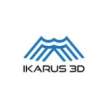
Most businesses these days approach 3D modeling services as a part of their product development process. You must have known how 3D representation makes the buyer's persona more interactive. But, before partnering with a 3D company, it's best to understand what lies behind your project development. The world of 3D is diverse, and there's always some level of development running on. Besides, it's essential to stay technologically ahead. It never matters whether you are planning for 3D printing, manufacturing, gaming, or marketing; the quality of service has more significance.
In this article, we'll focus on the top 3D modeling software top-notch professionals use when providing 3D modeling services, especially for 3D avatar development.
Blender
Blender is a free 3D modeling software widely used by 3D artists. Blender is a robust and versatile open-source 3D computer graphics software that has gained immense popularity in various creative industries. Known for its extensive features and capabilities, Blender is used for tasks ranging from 3D modeling, animation, and rendering to video editing and game development.
Although initially challenging to newcomers, Blender's user interface presents a wide range of tools and functionalities that cater to diverse creative needs. Its robust 3D modeling capabilities allow users to create complex objects and characters, while its animation tools support the creation of intricate and realistic movements.
Maya
Autodesk Maya is a leading 3D computer graphics software used extensively in film, video game development, animation, and visual effects. Known for its robust and versatile toolset, Maya enables artists and designers to create complex 3D models, stunning animations, and realistic visual effects. Maya's strengths lie in its character animation capabilities, which include advanced rigging systems and character animation tools that empower animators to bring characters to life with intricate movements and expressions.
Maya is a commercial software with a significant price tag that may not be accessible to independent artists. Nevertheless, Autodesk Maya remains an industry-standard choice for those in professional settings requiring top-tier 3D modeling, animation, and rendering capabilities.
SketchUp
SketchUp has gained widespread popularity among architects, designers, and hobbyists for its intuitive and approachable custom 3D modeling interface. SketchUp is known for its simplicity, making it accessible to users with varying experience levels. It excels in creating quick conceptual models and architectural designs, making it a go-to tool for architects, interior designers, and DIY enthusiasts. SketchUp's ease of use is primarily attributed to its signature "Push/Pull" tool, which allows users to effortlessly extrude 2D shapes into 3D forms.
SketchUp comes with limitations. It may not be as suitable for complex organic modeling or highly detailed, photorealistic rendering as some other software options offer more advanced tools in those areas. It also provides free and paid versions, making it accessible to various users with varying needs and budgets.
AutoCAD
AutoCAD established itself as an industry standard for creating precise 2D and 3D drawings and models, primarily in architecture, engineering, and construction. Architects use AutoCAD to produce architectural plans and floor layouts, while engineers use it for designing mechanical parts and systems. The software also supports 3D modeling, enabling users to create intricate 3D models for visualizations, simulations, and 3D printing.
AutoCAD offers a range of specialized toolsets, AutoCAD Architecture, and AutoCAD Mechanical. AutoCAD's extensive library of blocks and symbols and its support for external plugins and customization make it highly adaptable to custom 3D modeling services.
Rhino
Rhino excels in creating complex 3D models, whether organic and freeform shapes or precise geometric forms. What sets Rhino apart is its NURBS (Non-Uniform Rational B-Spline) modeling, which allows for the creation of highly accurate and smooth curves and surfaces. This makes it particularly well-suited for designing products, buildings, and objects that require precise mathematical modeling.
Rhino also has a robust ecosystem of plugins and extensions that further extend its capabilities. These plugins cover various applications, including rendering, simulation, animation, and parametric design.
Where does AI stand today?
The hype that AI has brought in 3D technology is inevitable. Moreover, it has enhanced the way the 3D modeling process runs. But, one must understand that along with machinery advancement, there's equal integration of human creativity and expertise. The right software and the right skills matter when projecting your product.
Conclusion
The world of 3D modeling services offers numerous benefits. You must understand that each specification comes with a diverse range of potentialities. Ultimately, the choice among these top 3D modeling software options depends on the professionals' specific requirements and preferences.
About the Creator
Ikarus 3D
Ikarus 3D, a top AR/VR/XR partner. We craft custom, lightweight 3D models, photorealistic designs, and optimized assets for immersive experiences.
www.ikarus3d.com






Comments (1)
this is so great you can also read what i have just prepared for you